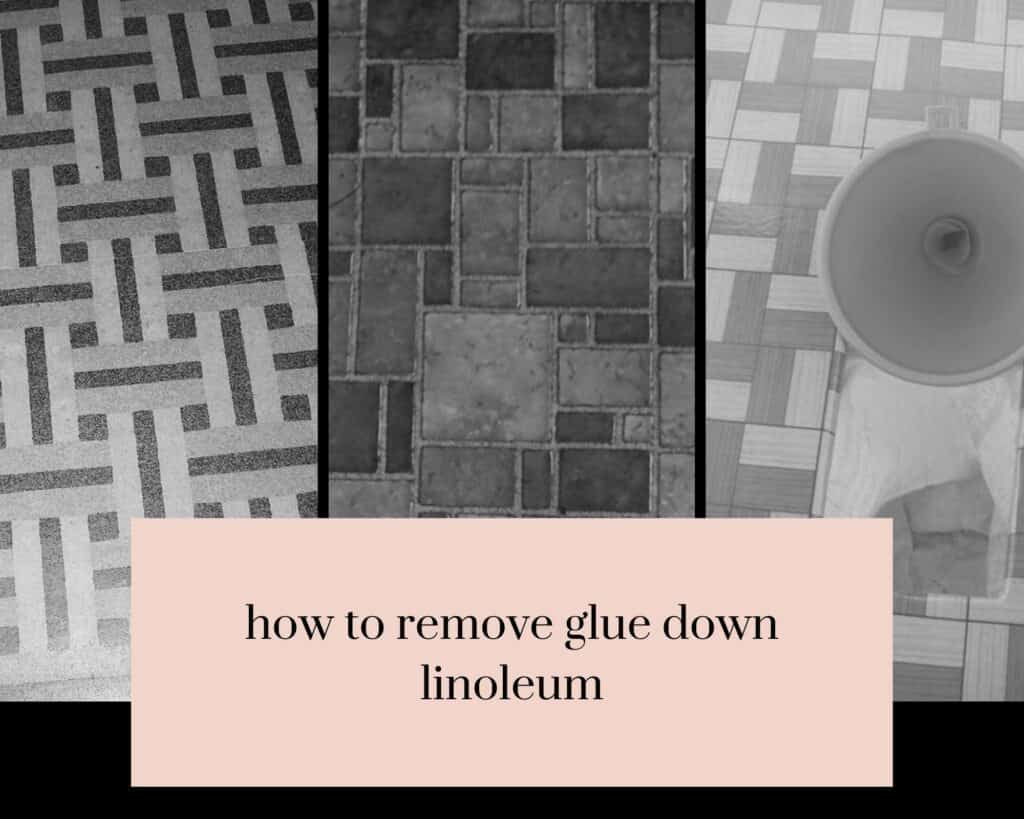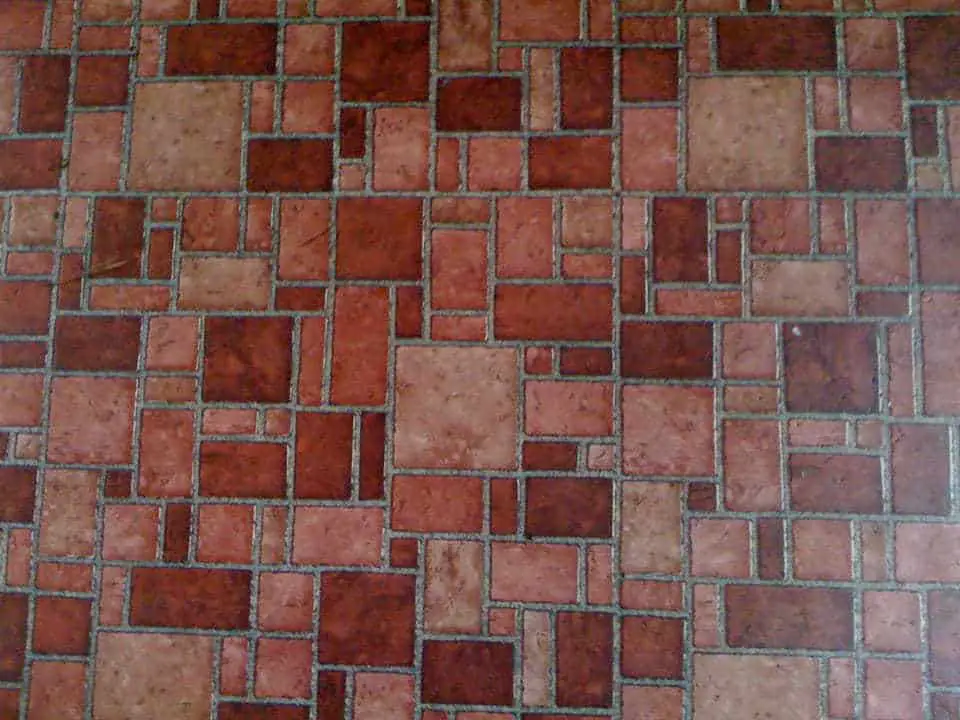
Linoleum is a resilient and classic material, usually found in spaces with high traffic, like bathrooms, hallways, and kitchens.
A minor downside to using lino is that the bond between the linoleum and adhesive toughens over time, making it hard to completely remove the material from your floor.
If you wonder how to remove glue down linoleum, the good news is that we know the right steps to do the job without causing damage to your wood floor.
Prepare a large investment of patience and time, and follow this guideline:
- Divide the floor into strips of 6-12 inches
- Detach the top layer of linoleum
- Scrape away the residue glue
Glue Care will take you to the instructions on removing glued lino flooring.
Things You’ll Need
Tools
- Pliers
- Isopropyl alcohol
- Utility Knife
- Flat pry bar
- Heat Gun
- Putty Knife
- Floor Scraper
Safety Gear
- Sturdy shoes
- Work gloves
- Knee pads
- Long pants
- Face mask
How To Remove Glue Down Linoleum?
Floor covering and glue or its backing can contain asbestos, particularly an old-fashioned floor where people added fibers for strength and durability.
If that asbestos breaks down during removal, the fibers will go into the air and cause a severe health danger to people who breathe in those fibers.
So, please be careful and gentle during the process.
Divide The Floor Into Strips of 6-12 Inches
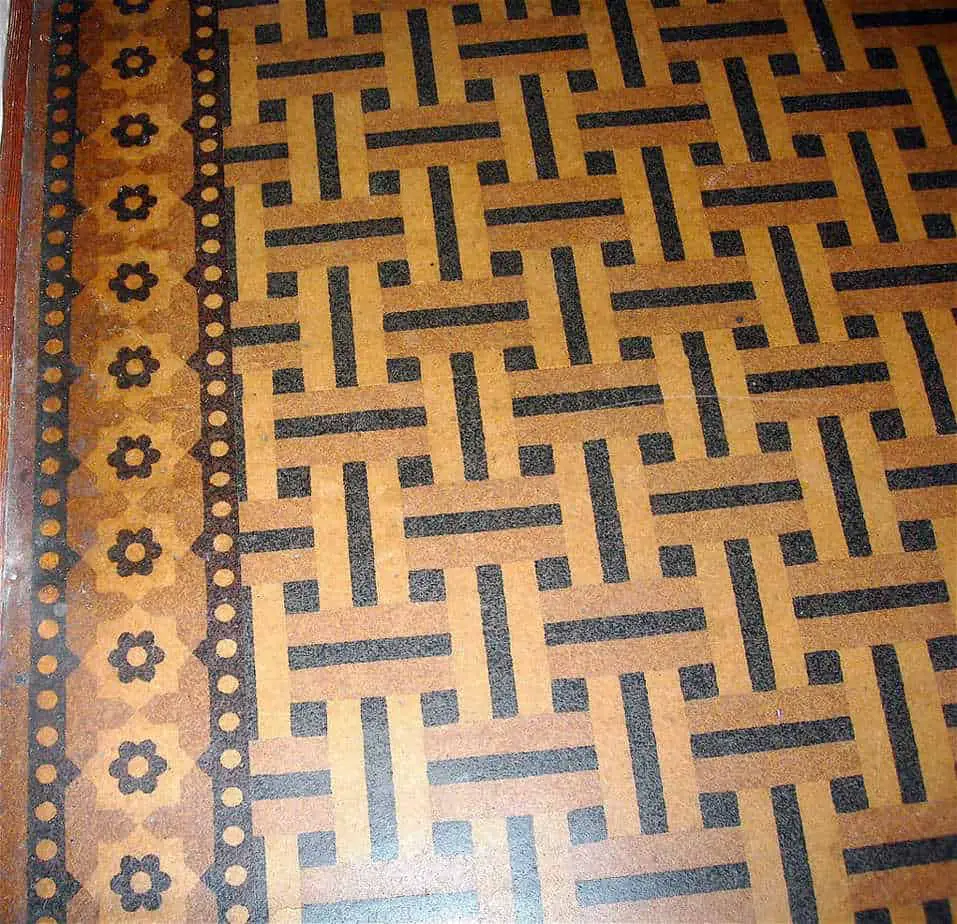
It’s better to work in small parts to make it easier and avoid streaks. Score your flooring into small strips with 6-12 inches width.
If the lino features a pattern with tiles, you can follow the tiles’ outlines to score. Do it carefully and avoid cutting through your material.
Or else, you may damage the wood floor underneath. If it is hardwood, it would be a disaster.
Detach The Top Layer of Linoleum.
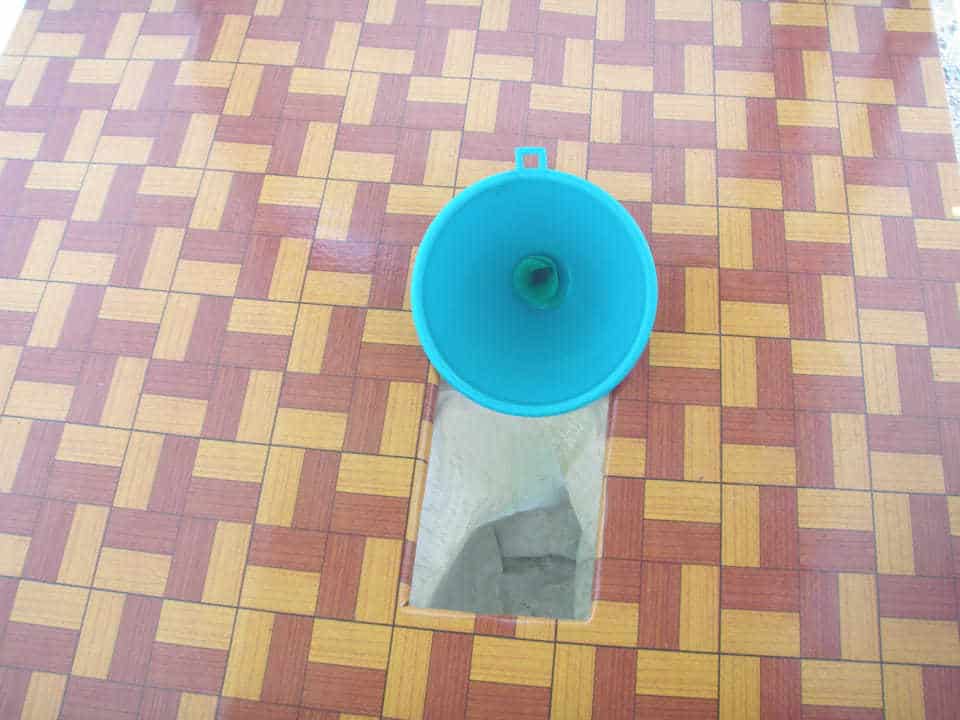
The goal is to remove both lino layers, so you should handle the first one since it will come off pretty easily. The latter is an adhesive backing and will be more challenging to tackle.
Start from working the oscillating multitool’s edge or scraper underneath one of the scored marks, then pull up the linoleum’s top.
Continue working with small parts until you remove the entire top layer.
Scrape Away the Residue Glue
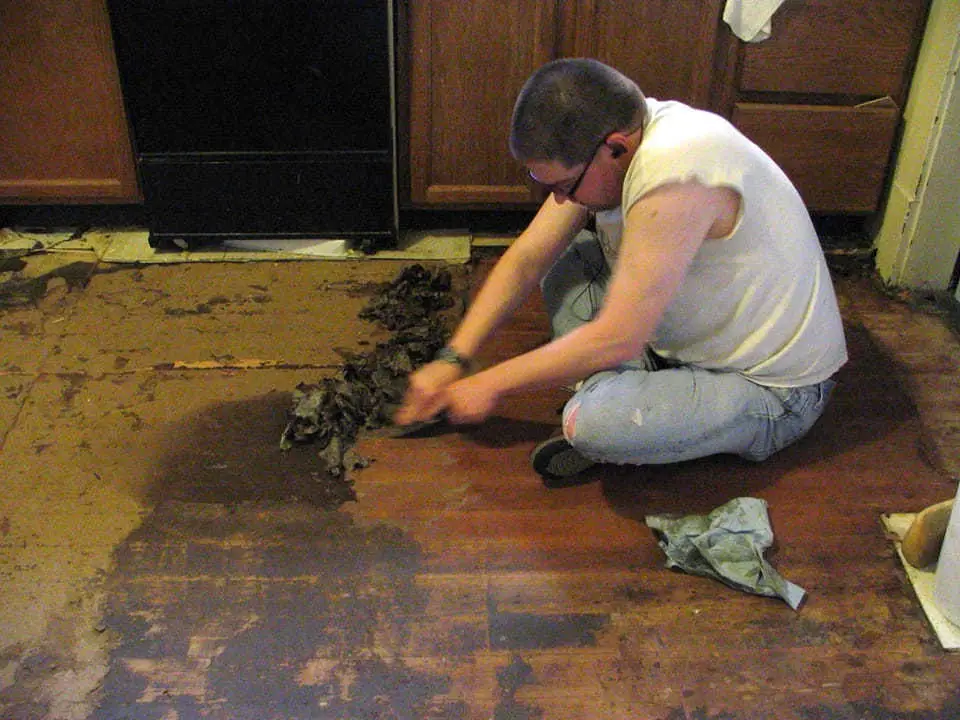
To deal with the remaining backing, first, use a wallpaper steamer to heat the floor. A hairdryer at the highest temperature level or heat gun will also work just fine.
After softening a small part using a chosen heating method, simply scrape away the glue at an angle of 45 degrees. Please be careful to avoid gouging the subfloor when working.
Remove part by part until you successfully remove the entire adhesive and backing.
If you encounter some particularly headstrong spots, apply a little paint thinner or isopropyl alcohol to those particles and allow your solution to sit for a certain time suggested in the instructions.
After that, continue to scrape the residue adhesive away at an angle of 45 degrees.
In some cases, you can skip this step and move forward to laying a brand-new flooring material on the current lino’s top.
However, please note that such a shortcut will lift your floor by ⅛ inches at least.
If you skip this second removal, think about it as a marathon rather than a sprint. With the right gadgets and extra patience, you can lay an even groundwork for your brand-new flooring.
A bright, smooth floor is rewarding, alright?
FAQS
Do you have any other questions floating around this topic? If yes, here are the two most frequently asked inquiries relating to removing adhesive from walls. Check if they’re the same as those running in your head.
What Will Dissolve Vinyl Glue?
Acetone is an effective solvent for removing materials like vinyl floor glue from various surfaces.
Vinyl floor epoxy makes a mess after installation, even though you’re exceedingly careful. Acetone can help cope with this adhesive quickly.
Acetone is a perfect medium between light solutions like vinegar and harsh glue removers, like paint thinner and other chemicals. You can use it for removing vinyl glue, super glue, and other similar tasks.
What Is Better For Removing Glued Linoleum Than Goo Gone?
Using a solvent like Goo Gone from a store is not the only method to eliminate the sticky lino backing.
You may not know that there are alternative remedies right in your house that prove equal effectiveness.
Vinegar
If you find an epoxy difficult to pull off a surface, apple cider vinegar can help loosen the bond, making the task more straightforward.
Vinegar, liquid dish soap, and warm water are the most frequently used formula for getting rid of sticky glues.
Baking soda
Mix a baking soda paste with water and apply the mixture to those sticky areas on your floors. Massage the gooey blend into the glued areas and let it dissolve the wax, scummy, or glued substance.
After that, you can wipe the adhesive away easily.
If you want a stronger baking soda solvent, use coconut oil instead of water. This solution is more powerful and smells nice, too.
Cooking spray
Non-sticky cooking spray deters food from attaching to pans and pots, so, similarly, it can lubricate other finishes to make sticky areas or glue wipe away effortlessly.
Apply the cooking spray on the sticky surface you want to clean, then let the oil soak into the glued section for a couple of minutes and scrub it off the floor.
This video shows you how to remove super glue from hardwood step by step.
Conclusion
That is all about how to remove glue down linoleum.
Getting rid of an outdated-style lino floor is far from straightforward since it requires extra time and patience. But on the bright side, you don’t need any complex or advanced equipment to proceed with the task.
Beautiful, even flooring is worth your investment of time and effort, indeed.
Good luck with your project!
Related article:
- How To Glue Shells To Wood? Get Your Job Done In 4 Steps
- How to Glue Fabric to Wood: Effective Materials and Methods
